Government regulations and controls hinder discovery, treatment, and affordability
The mission of the Bridge to a Cure Foundation is to increase the pace and success of pediatric cancer research. In order to do that, we need to remove barriers to finding cures and effective treatments. In this blog we will look at:
- How government red tape hinders cancer research.
- Costs of childhood cancer to families and society.
- Why we need a national strategy to align priorities and streamline the search for cures.
1. Government red tape and cancer research.
The cost of government regulations is well known to the industries that pay the burden. One study put the cost of new regulations implemented in the Obama era at $100 billion. These costs are not just born by manufacturers and utilities, but also in the research arena where agencies such as the Food and Drug Administration have stymied development of drugs to treat cancer. Thousands of families have suffered as a result of government red tape.
Dr. Vincent DeVita, who developed the first curative chemotherapy protocol for adult cancer, argues that the FDA has held up vital cancer treatments through its cumbersome and outdated approval process. In his book The Death of Cancer, he says that bureaucracy is the only thing standing in the way of transforming cancer from a killer to a “chronic but survivable illness.”
DeVita argues that the FDA should not be approving drugs for treating cancer because it treats them like traditional drugs, not taking into account the fact that cancer patients may die without trial medicines. FDA approvals, he argues, are one of the biggest obstacles to patients receiving life-saving treatments.
“The FDA is approving drugs based on outdated methods,” he said in an interview. “It should approve new cancer drugs based on their safety profile and their ability to hit important molecular targets. And I think cancer centers have matured enough to handle all the early trials by themselves.”
The National Cancer Institute (NCI) and FDA should delegate responsibility for all phase I and II trials to NCI-approved cancer centers, he says. This would increase the speed of developing new drugs tenfold, and cost a lot less than the current system.
“Guidelines are backward-looking in a rapidly changing field like cancer,” DeVita says. “But what worries me more are the constraints on innovation. New approaches to treatment in this era of targeted therapy need maximum flexibility to mix and match treatments in order to control the wily cancer cell.” He also calls for greater collaboration between cancer treatment centers.
2. Government and the high costs of childhood cancer.
Since the early 1900s, medical special interests have been lobbying politicians to reduce competition. By the 1980s, the U.S. was restricting the supply of physicians, hospitals, insurance and pharmaceuticals, while subsidizing demand. “In too many areas of the economy — especially health care — free enterprise has given way to government control in ‘partnership’ with a few large or politically well-connected companies.” (Ryan 2012).
Meanwhile, a National Children’s Cancer Society survey of 449 families coping with childhood cancer found that 95 percent reported their child’s cancer caused a financial burden on the family. Among families who were not poor when their child was diagnosed, 10 to 15 percent became impoverished as a result of medical bills. A quarter of families reported losing more than 40 percent of their income to help pay the bills, and this did not even count out-of-pocket expenses like travel to hospitals and childcare.
These findings are not surprising when you consider that the average cost associated with each case of childhood cancer is $833,000. The average cost of hospitalizations for pediatric cancer is $40,000 — nearly five times as much as hospitalizations for other pediatric conditions. And let’s not forget that cancer is just one of the pediatric diseases that rob family finances. An estimated 30 million children in America struggle with a chronic disease or psychological disorder.
The economic cost to families and our nation is staggering. The emotional stress on families is not quantifiable — nor is what our nation forfeits from not having many of these children achieve their potential.
Disturbingly, the culprit contributing to this emotional and economic devastation is the medical industry’s antiquated approach to childhood cancer research and their influence on government.
3. Why we need a national strategy to align priorities and streamline the search for cures.
Government regulations should be linked to an overarching strategy that improves our individual and national health, safety, and economic conditions. Economic return must be part of the strategy.
Regulations on automobile safety and emissions are as example. A study by the Institute of Transportation Studies at the University of California, Davis found that added costs from such regulations are significant, but “represent only a modest part of overall vehicle cost increases.” Regulations “had little discernible effect on industry performance and activities,” with cost increases “largely accommodated within normal business and market planning processes of companies.”
The same cannot be said of government regulations restricting new cancer drugs, since they actually prevent patients who have been diagnosed with terminal diseases from accessing medications that are experimental in nature.
I am not arguing for eliminating all regulations, but rather for eliminating those that create barriers for research into cancer and other pediatric diseases — the kind outlined in a study by the Regulatory Transparency Project:
“Poorly designed regulations may cause more harm than good; stifle innovation, growth, and job creation; waste limited resources; undermine sustainable development; inadvertently harm the people they are supposed to protect; and erode the public’s confidence in our government,” the study found.
We should also work to eliminate regulations that drive up the cost of research and treatment in response to legal risk. On the other hand, we need new regulations to address the imbalance in funding for childhood vs. adult diseases. Here’s the dilemma:
- The 60+ age group is huge and they face many medical issues. It’s an attractive market for the pharmaceutical industry and other research institutions. But our youth are the future of our nation, the “seed corn” that hold the key to productivity and a better life.
- Despite their tremendous potential, children under 18 make up less than a quarter of the total population. Those suffering from serious diseases are an even smaller percentage. About 11,060 children in the United States under the age of 15 will be diagnosed with cancer this year. This accounts for less than 1 percent of all cancers. Yet while their numbers are small, the costs to families and society are enormous.
When it comes to new regulations, we should adopt ones that encourage collaboration, investment and promising new approaches. At the top of the list is building a national pediatric cancer database — one that will allow us to tap into the power of artificial intelligence to end the scourge of childhood cancer.
What regulations can be put in place to encourage government, research institutions, and private industry to do the right thing: collaborate and invest in our future? If the government can demand that carmakers invest in seatbelts, why can it not demand that pharmaceutical companies invest more in pediatric research?
It’s time to review our country’s regulatory strategy to eliminate regulations that are a barrier to research, and to add regulations and incentives to accelerate meaningful breakthroughs.
Redefining the role of government in pediatric cancer research is essential to achieving the breakthroughs so many children are counting on. To read our prior posts providing solutions to improving our approach pediatric cancer research, visit www.bridgetoacure.org.
The Bridge to a Cure Foundation is the lead advocate for modernizing our approach to pediatric cancer, with a priority on building a pediatric cancer database to speed up the search for cures. We have met and gained the support of over 120 institutions and practitioners, including the former NCI Director Ned Sharpless who has become a forceful proponent and driver of this initiative in Washington. To learn more about the foundation and add your support, visit www.bridgetoacure.org.






